Births
| | This section is empty. You can help by adding to it. (June 2020) |
| |||
|---|---|---|---|
| +... |
| 1537 in science |
|---|
| Fields |
| Technology |
| Social sciences |
| Paleontology |
| Extraterrestrial environment |
| Terrestrial environment |
| Other/related |
The year 1537 in science and technology included many events, some of which are listed here.
| | This section is empty. You can help by adding to it. (June 2020) |
| | This section is empty. You can help by adding to it. (January 2012) |

Fibonacci, also known as Leonardo Bonacci, Leonardo of Pisa, or Leonardo Bigollo Pisano, was an Italian mathematician from the Republic of Pisa, considered to be "the most talented Western mathematician of the Middle Ages".
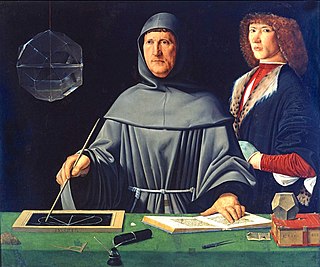
Fra. Luca Bartolomeo de Pacioli was an Italian mathematician, Franciscan friar, collaborator with Leonardo da Vinci, and an early contributor to the field now known as accounting. He is referred to as the father of accounting and bookkeeping and he was the first person to publish a work on the double-entry system of book-keeping on the continent. He was also called Luca di Borgo after his birthplace, Borgo Sansepolcro, Tuscany.

Pedro Nunes was a Portuguese mathematician, cosmographer, and professor, probably from a New Christian family.
Vicente Lusitano was a Portuguese composer and music theorist of the late Renaissance. Some of his works on musical theory and a small number of compositions survive. Lusitano was for a time a Catholic priest and taught in several Italian cities, but later converted to Protestantism.
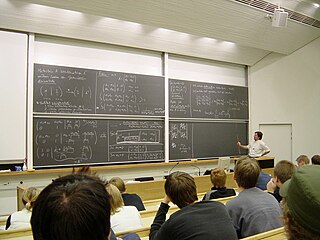
In contemporary education, mathematics education—known in Europe as the didactics or pedagogy of mathematics—is the practice of teaching, learning, and carrying out scholarly research into the transfer of mathematical knowledge.
This is a timeline of Portuguese history, comprising important legal and territorial changes and political events in Portugal and its predecessor states. To read about the background to these events, see History of Portugal.

New Mathematics or New Math was a dramatic but temporary change in the way mathematics was taught in American grade schools, and to a lesser extent in European countries and elsewhere, during the 1950s–1970s.

Cristóvão da Costa or Cristóbal Acosta and Latinized as Christophorus Acosta Africanus was a Portuguese doctor and natural historian. He is considered a pioneer in the study of plants from the Orient, especially their use in pharmacology. Together with the apothecary Tomé Pires and the physician Garcia de Orta he was one of the pioneers of Indo-Portuguese medicine. He published a book on the medicinal plants of the orient titled Tractado de las drogas y medicinas de la Indias Orientales in 1578.
Joseph Hillel Silverman is a professor of mathematics at Brown University working in arithmetic geometry, arithmetic dynamics, and cryptography.
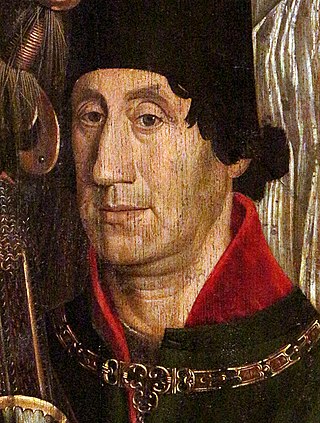
Dom Peter, Duke of Coimbra, KG, was a Portuguese infante (prince) of the House of Aviz, son of King Dom John I of Portugal and his wife, Philippa of Lancaster, daughter of John of Gaunt. In Portugal, he is known as Infante Dom Pedro das Sete Partidas [do Mundo], "of the Seven Parts [of the World]" because of his travels. Possibly the best-travelled prince of his time, he was regent between 1439 and 1448. He was also 1st Lord of Montemor-o-Velho, Aveiro, Tentúgal, Cernache, Pereira, Condeixa and Lousã.

Diego Ortiz was a Spanish composer and music theorist in service to the viceroy of Naples ruled by the Spanish monarchs Charles V and Philip II. Ortiz published the first manual on ornamentation for bowed string instruments, and a large collection of sacred vocal compositions.
Boncompagno da Signa was an Italian scholar, grammarian, historian, and philosopher.
The UNASUR Constitutive Treaty, officially the Constitutive Treaty of the Union of South American Nations, was signed on May 23, 2008 during the extraordinary summit of heads of state and government of the Union of South American Nations (UNASUR) held in Brasília, Brazil. It officially established the Union of South American Nations, an intergovernmental continental union of all twelve South American nations.
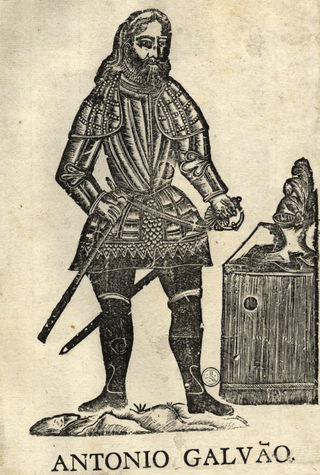
António Galvão, also known as Antonio Galvano, was a Portuguese soldier, chronicler and administrator in the Maluku islands, and a Renaissance historian who was the first person to present a comprehensive report of the leading voyages and explorers up to 1550 by Portuguese explorers and those of other nationalities. His works, especially the Treaty of Discovery that was published in Lisbon in 1563 and in English by Richard Hakluyt in 1601, are notably accurate.
The year 1518 in science and technology included many events, some of which are listed here.
A rutter is a mariner's handbook of written sailing directions. Before the advent of nautical charts, rutters were the primary store of geographic information for maritime navigation.
André Álvares de Almada was a Cape Verdean writer, trader and explorer of mestiço (mixed) descent. He was one of the first recorded Cape Verdean writers.

Francisco Gomes Teixeira was a Portuguese mathematician and historian of mathematics.
A magic polygon is a polygonal magic graph with integers on its vertices.
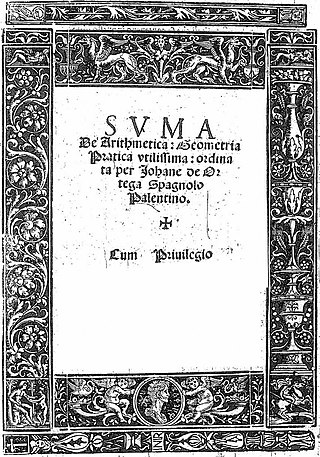
Juan de Ortega, was a Spanish mathematician. He wrote some of the earliest works on commercial arithmetic, and discovered an improved method for calculating square roots.